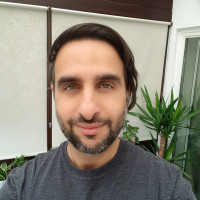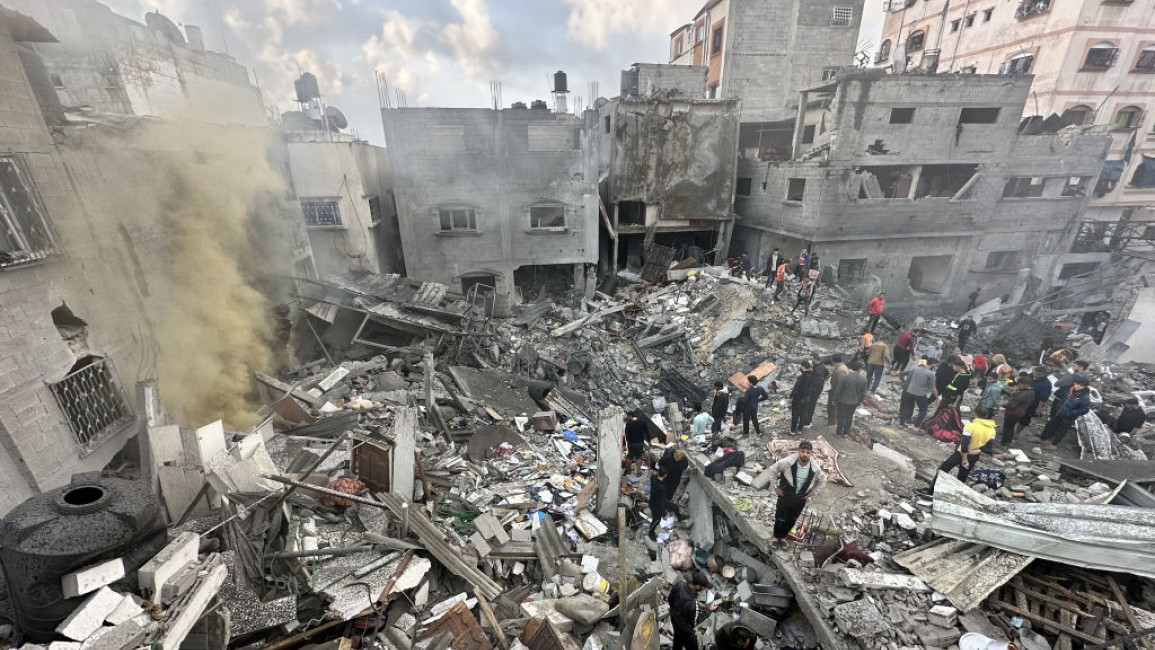
From the First Intifada to the war on Gaza: Why Israel targets Jabalia refugee camp
As the smoke and dust dispersed, with their bare hands locals combed layers of shattered concrete and steel, which hours earlier had been homes in Jabalia refugee camp.
The Israeli bomb pulverised an entire block, killing hundreds and leaving only a large pile of rubble mixed with the screams of grieving families as men and boys tried to dig out survivors. It has become one of the prominent massacres in the current onslaught on Gaza.
Within this modern-day Guernica lies also a significant historical episode, distinct in its suffering and sacrifices, but contextually relevant to today’s onslaught. It was the spot where the spark of the first official, sustained popular uprising against Israel’s occupation was ignited, 36 years ago today. Within days, the First Intifada spread like wildfire across the occupied territories.
''During the Intifada, collective punishment took the form of curfews, closure of schools, universities, civil society organisations, and even mosques; demolishment of homes; restriction on the freedom of movement, destruction of crops; and cutting off water, electricity, and fuel supplies. Mass arrests were another tool in that policy. The family and friends of Palestinians accused of anti-occupation actions were routinely detained, many imprisoned without a charge.''
The Intifada – a term that refers to the burning desire to ‘shake off’ the burden of colonialism – erupted in December 1987 when an Israeli truck rammed a group of Palestinians as they waited at the Eretz checkpoint to cross into Israel for work. Several killed were from Jabalia. The next day, the funeral triggered a chain reaction of mass protests, strikes, and clashes with the Israeli army.
Israel responded militarily – including enacting a policy of breaking the bones of protestors and stone throwers. More than 1,000 Palestinians were killed and about 130,000 were injured. Tens of thousands more were imprisoned and many were tortured.
As someone who lived through both the First Intifada in Gaza and is now witnessing Israel’s mass culling in the same area, I can see disturbing similarities between these two events.
The scale of the destruction and human loss in the Intifada is, of course, incomparable with today’s war. But on a bare-bone level, Israel’s methods of suppression, objectives, and worldview remain more or less the same. Then like now, the general goal was to inflict as much harm as possible physically, psychologically, and economically on the occupied collective. Either to force Palestinians to surrender to Israel’s occupation as a matter of fact, or to make life for them unbearable so they would leave Palestine.
Both events erupted at a time when Palestinians had exhausted all means to break free from Israel’s military occupation.
The First Intifada was the peak of years of build-up after the Palestine Liberation Organisation had been evicted from Lebanon to Tunisia in 1982. With that came an increase in Israeli settlements in Gaza and the West Bank, and a sense of abandonment regarding the external actors, like the PLO, Arabs, and the international community.
Similarly, in the years leading up to October 7, a sense of abandonment was painfully taking hold of Palestinian society. It was mainly characterised by the 16-year blockade on Gaza; the diminishing West Bank land; and the Arab states’ normalisation with Israel, which threatened to dissolve the Palestinian right to self-determination and statehood.
In either case, the shake-off was meant to put Palestine back on the world’s agenda, against collective oblivion. An existential bid, so to speak. Today like yesterday, the suppressive methods have primarily been centred on collective punishment. Everything else is simply derivative of that practice.
During the Intifada, collective punishment took the form of curfews, closure of schools, universities, civil society organisations, and even mosques; demolishment of homes; restriction on the freedom of movement, destruction of crops; and cutting off water, electricity, and fuel supplies. Mass arrests were another tool in that policy. The family and friends of Palestinians accused of anti-occupation actions were routinely detained, many imprisoned without a charge.
The Israeli army’s reachability in the West Bank meant that those practices, and more, remain alive today.
But in Gaza, where the circumstances are different, the methods and their scale have evolved far beyond what was typically known during the Intifada. Although, there’s almost a local consensus that while the methods have evolved into unparalleled monstrosities, the Israeli endgame remains unchanged.
A report by +972 Magazine revealed that Israel’s collective suppressive methods employed during the current onslaught were deliberate. In other words, it is not a case of ‘collateral damage’, but arguably a scaled-up form of what was prevalent during the First Intifada, and the multiple rounds of violence that followed.
At the heart of that lies the so-called ‘power targets’, which during the First Intifada comprised mainly of demolishing homes or shutting down civil society institutions. These targets now include high-rise buildings, government institutions, multi-storey homes, and basic water and power infrastructure. This is almost every structure that makes Gaza liveable. “The emphasis is on damage, not accuracy,” said IDF Spokesman Daniel Hagari.
In a terrifying turn, the report also revealed that the Israeli army has been using an AI system dubbed Habsora (the Gospel) to “generate” targets almost automatically at a rate that far exceeds what was humanly possible. This allows the army to carry out strikes on residential homes where a single Hamas member, minor and junior operative even, is suspected to live. Any people in the vicinity, including whole families, are deemed irrelevant.
This has thus far resulted in the mass obliteration of chiefly civil infrastructure and the killing of thousands of innocent civilians, including over 7,000 children.
Bear in mind that Gaza is a small, densely populated strip of land, and the idea of having this many ‘justified targets’ (over 17,000 since the time of writing) is blatantly unrealistic. The vast majority of what was struck thus far did not have any military value.
During the Intifada (and the other turmoil thereafter), destroying and shutting down civil infrastructure, inter alia, was meant to deter Palestinians from participating in anti-occupation activities, and hinder a viable Palestinian future.
Bombing nearly 50% of Gaza's infrastructure and killing people in masses since 7 October, points to a similar endgame but on a larger scale, to shock the heart of Gaza’s civil society, pressuring the people to turn against the resistance.
As they see the tall building topple and people buried under the rubble, Gazans are expected to feel that the resistance is not in control on the ground. That serves to undermine their trust in their ability to fight back and shakes whatever is left of their sense of control over their destiny. The final result - the Israelis assess - would be people’s inability to cope and, eventually, wanting to leave.
The First Intifada heightened Palestinians’ resilience and taught them, and their descendants, how to withstand Israel’s repeated attempts to uproot them. Right where it started, in the Jabalia refugee camp, around the massive bomb crater where hundreds of people were killed, people still choose to stay.
Dr Emad Moussa is a Palestinian-British researcher and writer specialising in the political psychology of intergroup and conflict dynamics, focusing on MENA with a special interest in Israel/Palestine. He has a background in human rights and journalism, and is currently a frequent contributor to multiple academic and media outlets, in addition to being a consultant for a US-based think tank.
Follow him on Twitter: @emadmoussa
Have questions or comments? Email us at: editorial-english@newarab.com
Opinions expressed in this article remain those of the author and do not necessarily represent those of The New Arab, its editorial board or staff.


![Minnesota Tim Walz is working to court Muslim voters. [Getty]](/sites/default/files/styles/image_684x385/public/2169747529.jpeg?h=a5f2f23a&itok=b63Wif2V)




